Search
Did you mean: Arabia?
Search Results
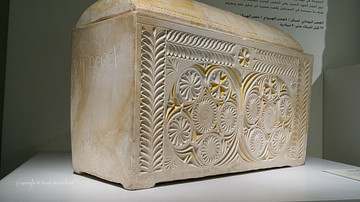
Image
Caiaphas Ossuary
Limestone ossuary with an Aramaic inscription on the side "Joseph, son of Caiaphas," found in Jerusalem in 1990.
Israel Museum, Jerusalem.
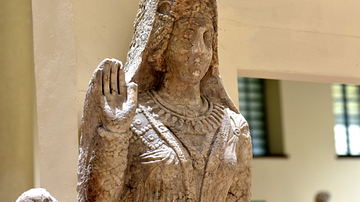
Image
Princess Doshafri from Hatra
This is the upper part of the statue of princess "Doshafri", daughter of king Sanatruq I of Hatra (reigned c. 140 - 180 CE). Although the statue is somewhat weathered, it is an excellent example conveying the appearance of a Hatrene princess...
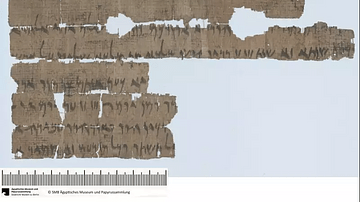
Image
The Passover Papyrus from Elephantine
A papyrus letter, written in Aramaic, from the fortified island of Elephantine in Egypt. The letter was written c. 419 BCE by a Jewish man named Hananiah and is addressed to his brother Jedoniah and the rest of the Jews garrisoned at Elephantine...
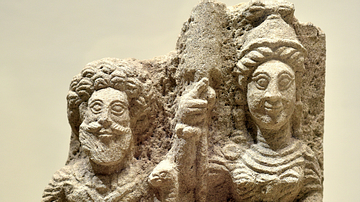
Image
Goddess Al-Lat and an Elderly God from Hatra
This limestone slab carved in relief shows two deities. On the right, the goddess Al-Lat is depicted, she wears a military dress and helmet and holds a spear in her right hand and a shield in her left arm. Her appearance is similar to Athena...
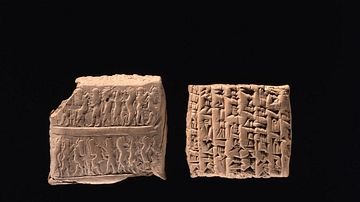
Image
Murashu Tablets
Tablet B5304, Murashu Archive. Contract for the supply of dates, written in Akkadian with a summary in Aramaic.
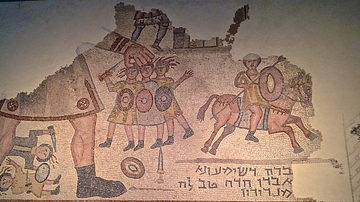
Image
Battling Giant
The oldest known synagogue mosaic with figurative motifs, this scene depicts a battle between a giant and soldiers armed with swords, shields, and lances. The soldiers are depicted as either wounded or dead. At the edge of the mosaic a cavalryman...
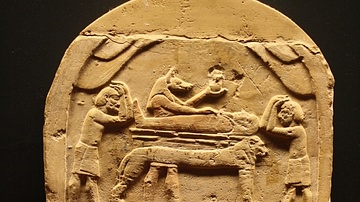
Image
Egyptian Funerary Stele
An Egyptian funerary stele of Ankh Hapy with an aramaic inscription. Limestone, from Memphis, 27th Dynasty, 525-404 BCE. (Vatican Museums, Rome)

Image
Statue of Sanatruq I from Hatra
This is, a little bit larger than a life-size, marble statue of Sanatruq I (reigned c. 140 - 180 CE), king of Hatra. The king wears an exquisitely carved dress and a headdress of an eagle. His right hand is raised in salutation while the...

Image
Temple Ritual Scene from Hatra
This limestone slab was carved in prominent sunken relief and depicts a temple ritual scene. A male figure wearing the head cap of Hatrene kings (very probably Sanatruq I who reigned c. 140 - 180 CE), holds a small bowl in his left hand while...
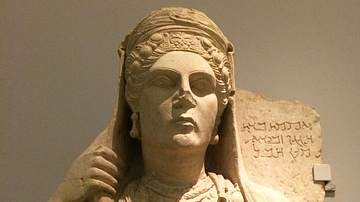
Image
Funerary Bust of a Palmyrene Lady
This funerary bust of a Palmyrene lady dates from c. 175-200 CE and is made of limestone. It is originally from Palmyra, Syria. (Inscribed in Aramaic: ‘Aqmat, daughter of Hagagu, descendant of Zebida, descendant of Ma'an. Alas!") The inhabitants...